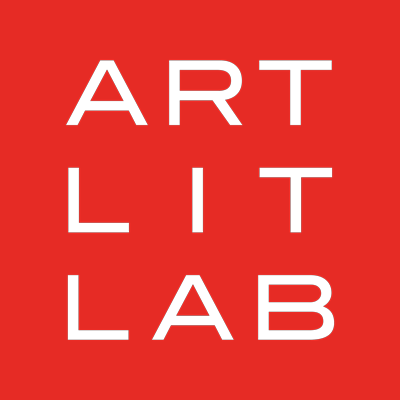The Shape of the Environment, an exhibition that explores a wide variety of topics related to environmental issues, will be on display at the Arts + Literature Laboratory from August 23 through November 4, 2022. Curated by Lelia Byron, the exhibition includes work by Fábio Erdos, Patrizia Ferreira, Hong Huo, Hattie Lee, Lianne Milton, Richie Morales, Beth Racette, Nirmal Raja, Sparker, Roberto Torres Mata, Maria Amalia Wood, Derick Wycherly, and Rina Yoon. Byron explains, “I believe that artists can be creative problem solvers and innovators. One idea for the exhibition is to serve as a platform or a bridge bringing together artists, writers, scientists, and community members to make connections and help foster a collaborative creative community working to think of innovative ways to approach environmental topics.”
A zine for the exhibition can be viewed online.
Gallery hours are Tuesday-Friday 10am-5pm and Saturday 12-5pm (free). The galleries will be closed Labor Day weekend. Please check our current COVID-19 safety guidelines before your visit.
During the exhibition, there will also be a number of free interactive events including an opening reception, educational workshops, a film screening, a reading, a discussion event for scientists and artists, and a closing event with a performance. The reading will include work from Tension Zones Collective Daybook with Martha Bergland, Chuck Stebelton, Kate VandenBosch, Jane Curtis, and Rose Heflin, as well as special guest Mrill Ingram.
Public Events
- Friday, August 26 - Opening Reception - 6-8pm
- Sunday, September 18 - Orientations: A Reading from the Tension Zones Collective Daybook - 2-4pm
- Saturday, October 1 - Film Screening: Thirst for Justice and 65 - 7-9pm
- Saturday, October 8 - Adult Papermaking Workshop - 2-4pm
- Sunday, October 16 - Discussion Event With Artists and Scientists - 2-4pm
- Thursday, October 20 - Teen Activism and Climate Change Workshop 6-8:15pm
- Friday, November 4 - Performance Night and Closing Reception - 5-9pm
In The Shape of the Environment, the exhibiting artists convey the importance of different environmental issues for people across the globe. For example, in her photo series, The Hinterland, Lianne Milton photographs the semiarid region known as the Sertãoao, in Brazil, documenting how the deforestation of the Amazon rainforest is drastically altering the climate. Filmmaker Fábio Erdos, meanwhile, makes work about a recent Greenpeace expedition into the Antarctic and its deep sea. His project shares with us the diverse, colorful, and abundant world that inhabits the seabed beneath the icebergs and the impact climate change is having on this area.
Natural materials and living also have a strong presence. Rina Yoon’s work, for example, includes some of the remains from burn sites of the Bighorn Fire in Arizona. These remains were gathered, cleaned, and added hand coiled paper to as a way of conversing with the trees that may not have survived the fire but still had a story to tell. Meanwhile, Patrizia Ferreira’s The Tree of Life has at its center an Ombú tree, a centenarian dioecious evergreen tree native to the Pampa of Uruguay and Argentina. In her work, it functions as an allegorical representation for resilience.
Another recurring topic among the exhibiting artists is the interest in exploration of materials. In making her collages and fiber works, Hattie Lee thinks about the resourcefulness in Native histories and survival, rural farming ancestors, and her depression-era Grandmother’s values. In Strange Dwelling, Hong Huo mixes ink with soap water and uses breath to blow bubbles onto paper. Using fire and water, a complementary pair in Chinese philosophy, as a central theme, Hong asks if we can find a balanced way to live among such extremes in ideas, opinions, and environmental conditions. Finally, Sparker explores materials to create immersive installations, rendering an environment that is totally abstract, nonsensical, absurd. The non-narrative in Sparker’s installations gives nothing to hold on to, no expectations or timeline to grasp, no events vulnerable to judgment.
Roberto Torres Mata and Derick Wycherly delve into handmade papermaking. Roberto draws on handmade sheets of paper made from mulberry plants. His work on migration examines the critical factors, including the impact of climate change, that cause displacement. Derick Wycherly’s work considers gift-giving as an Indigenous technology that connects people with one another and the land base they occupy. Specializing in printmaking and papermaking, Derrick’s handmade paper maps our relationships in place and time.
Artists also explore language and interdisciplinary fields. For her work, Nirmal Raja thinks about the special significance that clouds have in India as the much anticipated carriers of the monsoon season after a long, dry summer. Her work, Cloud Palace, takes inspiration from an epic poem titled Meghdootam or “cloud messenger” written by a 4th-century Indian poet- Kalidasa. Richie Morales also explores language, describing painting as his first language. His work for the exhibition is about the armament industry and the genealogy of violence, describing the armament industry from production to use as the most destructive human activity for Nature.
For many artists, making the work in this exhibition has been an opportunity to learn and reflect. For Beth Racette, making her series of Gaia paintings has been an opportunity to learn about and portray the many systems and aspects of the Earth. These paintings reflect Beth’s contemplation of the interconnectedness of life and the processes of flow. Maria Amalia Wood, whose creative practice incorporates textiles, papermaking, and community-focused storytelling reflects on her experience during the deadliest Atlantic hurricane in Central America’s history in 1998, asking the question, “How long before mending what we have torn apart is no longer an option?”




